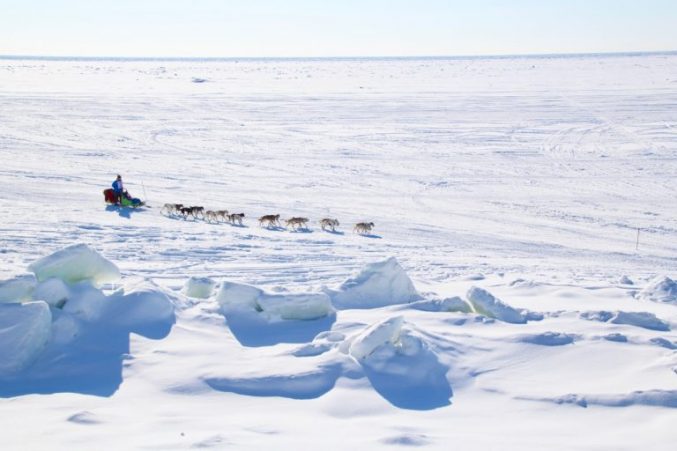
Photo Credit: Terrie Hanke
“You’re never the same, after you run the Iditarod, and I still lust to go out and run with dogs, even though that I know I shouldn’t. But I’d give just about anything to be able to do it again. To see the horizon again from the back of a dog team would be wonderful.” -Gary Paulsen
Among the extensive list of things which makes the Iditarod such an incredibly unique competition, the harsh weather which the mushers encounter, and the often dangerous terrain which they traverse, collectively make the Iditarod even more compelling to the fans and race admirers.
Although temperatures can reach close to -80° Fahrenheit, intense blizzards can create whiteout conditions, little snow can create rough terrain, and ice can potentially break, mushers also experience some of the the most beautiful sights which most people never will: a moonlit sky that is complemented with thousands of bright stars; a cloudless, blue sky that is filled with the mountaintops from the Alaskan Range; and vibrant colors from the northern lights.
While some mushers enter the Iditarod with the hopes of winning and others enter the race with the sole goal of becoming a finisher, almost all mushers can recall moments where they paused along the trail to appreciate the beauty and nature which surrounded them.
Often times in life, and certainly throughout history, people have articulated their experiences through the use of figurative language, imagery, and poetry. Use this figurative language lesson with your students in order to have them create poetic imagery which is related to the Iditarod and Alaska. Students will demonstrate their understanding of various figures of speech, they will craft an original poem and they will share their work with one another!
Figurative Language and the Iditarod Lesson


